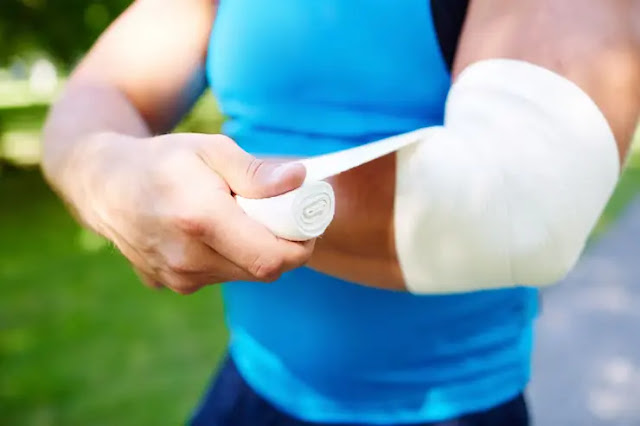Preventing Sports Injuries through Effective Sports Medicine
Sports medicine is a branch of medicine that focuses on the diagnosis, treatment, and prevention of injuries related to athletic and physically active individuals. With the increasing popularity of sports and physical activities, the importance of sports medicine in ensuring the health and safety of athletes cannot be overstated.

Overview of Sports Medicine
Sports Medicine is a specialized field that deals with the medical aspects of physical activity and sports. It encompasses a wide range of topics, including exercise physiology, biomechanics, nutrition, and injury prevention. The goal of Sports Medicine is to help athletes and physically active individuals perform at their best while minimizing the risk of injury.
Sports Medicine is typically divided into two main areas: non-surgical care and surgical care. Non-surgical care involves the diagnosis, treatment, and rehabilitation of sports-related injuries through the use of medical and therapeutic techniques. This can include physical therapy, rehabilitation exercises, and the use of assistive devices such as braces or crutches. On the other hand, surgical care is utilized when non-surgical methods are not effective in treating a sports injury.
The importance of Sports Medicine cannot be overstated, especially given the increasing popularity of sports and physical activities. With the rise of sports-related injuries, there is a growing need for specialized medical care to ensure the health and safety of athletes.
Types of Sports Injuries
Sports injuries can be classified into three main categories: acute injuries, overuse injuries, and traumatic injuries.
Acute injuries are sudden and typically result from a traumatic event, such as a fall or collision. Examples of acute injuries include sprains, strains, and fractures. These types of injuries can be quite painful and may require immediate medical attention.
Overuse injuries, on the other hand, develop gradually over time as a result of repetitive movements or overtraining. Examples of overuse injuries include tennis elbow, shin splints, and runner's knee. These types of injuries can be just as debilitating as acute injuries, but they often require a longer period of rehabilitation.
Traumatic injuries result from a high-impact event, such as a fall or collision. Examples of traumatic injuries include concussions, head injuries, and spinal cord injuries. These types of injuries can be life-threatening and require immediate medical attention.
Diagnosis and Treatment of Sports Injuries
The diagnosis and treatment of sports injuries typically begin with a physical exam. The doctor will examine the affected area, assess the range of motion, and test for any signs of instability or weakness. Imaging studies, such as X-rays, MRIS, and CT scans, may also be ordered to help diagnose the injury and determine the best course of treatment.
Medical treatments for sports injuries typically involve the use of pain relievers, anti-inflammatory medications, and physical therapy. In some cases, the use of braces or other assistive devices may be recommended to help manage the pain and promote healing.
Physical therapy is an essential component of the rehabilitation process for many sports injuries. Physical therapists work with athletes to develop an individualized treatment plan that includes exercises to strengthen the affected area, improve range of motion, and reduce pain.
In severe cases, surgery may be necessary to treat a sports injury. This may involve the repair or reconstruction of damaged tissue, or the removal of damaged tissue that is preventing the healing process.
Prevention of Sports Injuries
The best way to stay ahead of sports injuries is to prevent them from occurring in the first place. Pre-participation exams, proper training and warm-up techniques, and the use of protective equipment are all important steps in preventing sports injuries.
Pre-participation exams are critical in identifying any underlying medical conditions or physical limitations that could increase the risk of injury. This allows for early intervention and the development of an individualized plan to minimize the risk of injury.
Proper training and warm-up techniques are also important in preventing sports injuries. This includes gradually increasing the intensity and duration of physical activity, as well as incorporating proper stretching and strengthening exercises into the workout routine.
The use of protective equipment is also essential in reducing the risk of injury. This includes helmets, mouthguards, and protective gear for the chest, knees, and other areas of the body that are susceptible to injury.
In addition to these preventative measures, it is important for athletes to listen to their bodies and take appropriate rest when necessary. This can help prevent overuse injuries and allow the body to recover from physical activity's stresses.
Conclusion
Sports Medicine plays a crucial role in promoting the health and safety of athletes. With proper diagnosis, treatment, and prevention, sports injuries can be prevented or managed effectively. By staying ahead of injuries, athletes can continue to perform at their best and enjoy their chosen sport or physical activity.
Sports Medicine helps to ensure that athletes can safely engage in their passion, and it is essential that we continue to support and advance the field. Whether it is through preventative measures, proper treatment and rehabilitation, or the use of advanced medical technologies, Sports Medicine will continue to play a vital role in ensuring the health and well-being of athletes for years to come.

Comments
Post a Comment